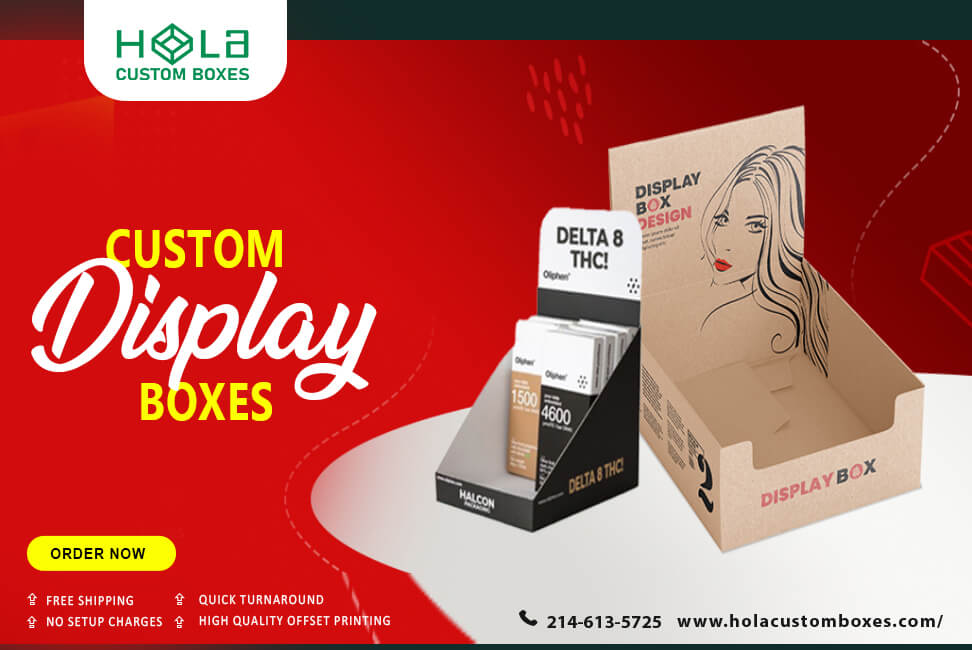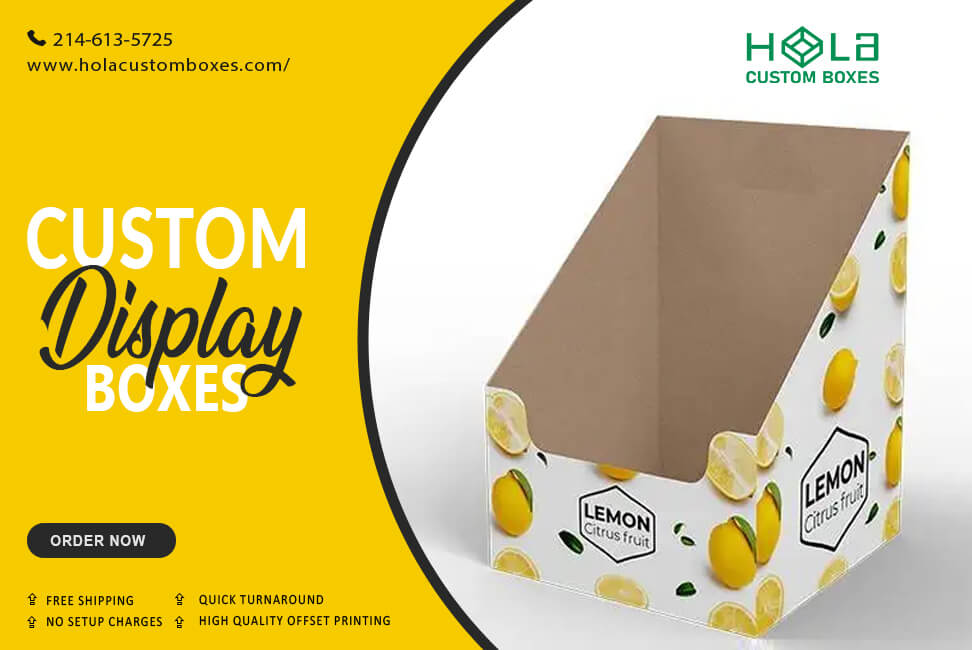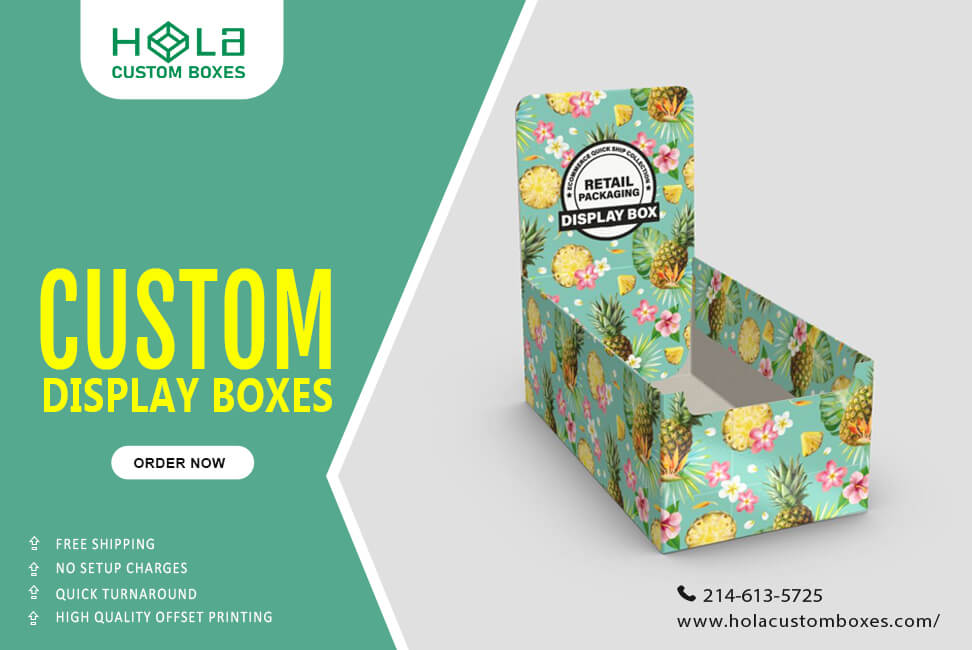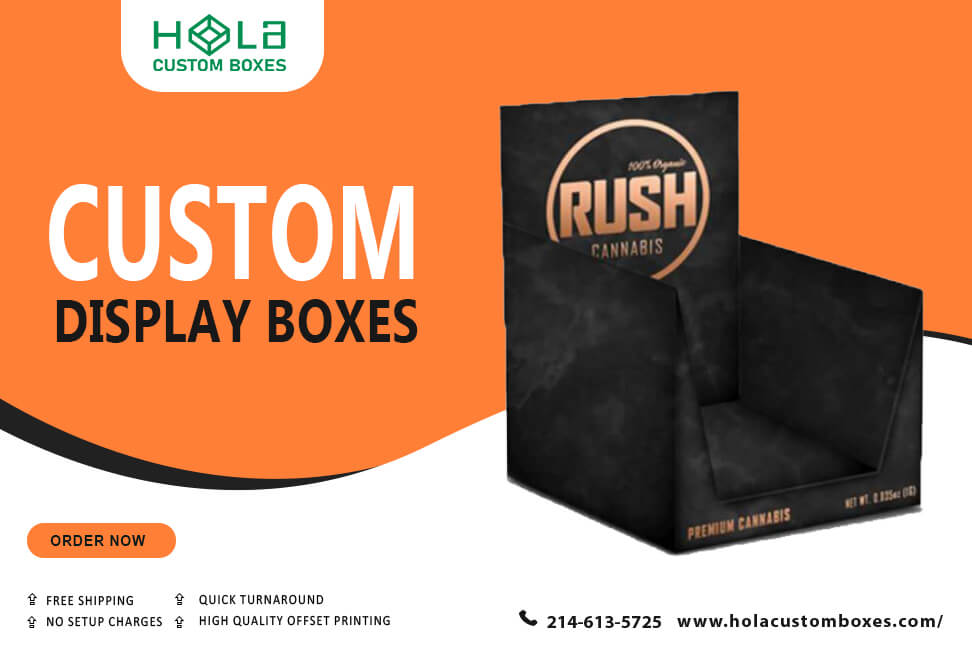Designing Custom Display Boxes For Maximum Impact: Tips And Techniques
2026-01-02 20:47:55
When designing custom display boxes, you want to create something that stands out while aligning perfectly with your brand. Picture vibrant colors that spark interest and graphics that tell your story at a glance. Consider how unique structures can enhance visual appeal and improve functionality. But what specific techniques can you apply to guarantee your boxes leave a lasting impression? Let's explore the details that make all the difference.
Main Points
- Choose sustainable materials and colors that align with your brand values to attract eco-conscious consumers and build trust.
- Utilize bold typography and eye-catching graphics to enhance readability and create a lasting impression on potential customers.
- Incorporate unique structural designs, such as clever folding and compartments, to improve product visibility and create an engaging unboxing experience.
- Add interactive elements, such as QR codes or hidden messages, to foster customer engagement and strengthen brand loyalty.
- Balance cost and quality to ensure that your custom display boxes are visually appealing without exceeding budget constraints.
Understanding Your Brand and Target Audience
Understanding your brand and target audience is like painting a masterpiece; every brushstroke matters.
You've got core values and unique traits that set you apart, shaping how consumers see your products. Dive deep into their minds—what emotions do your designs evoke? Colors like blue build trust, while red sparks excitement.
Conduct surveys and analyze competitors to uncover preferences and trends. This research guides your packaging choices, forging emotional connections with consumers. Incorporating custom printing into your packaging can further enhance your brand's identity and visibility.
Choosing the Right Materials and Colors

Choosing the right materials and colors can transform your display from ordinary to extraordinary. Opt for sustainable options, such as recycled cardboard or biodegradable plastics, to resonate with eco-conscious consumers and boost your brand's reputation. Moreover, utilizing eco-friendly boxes can enhance your packaging's appeal while supporting sustainability initiatives.
When selecting colors, think about their psychological impact—red ignites excitement, while green embodies freshness. Embrace textures and finishes, like matte or glossy coatings, to add depth and intrigue to your packaging.
Striking a balance between cost and quality guarantees your display remains visually engaging without breaking the bank. In the end, your choices should reflect your brand identity, creating a cohesive, memorable impression on potential customers.
Incorporating Eye-Catching Graphics and Typography
The right materials and colors set the stage, but it's the graphics and typography that steal the show. Bold, modern fonts enhance readability and create striking visual statements, making your product unforgettable.
Remember, color psychology plays a pivotal role; blue evokes trust while red ignites excitement, influencing emotions and purchases. Incorporate eye-catching graphics that resonate with your brand identity for heightened visibility.
Aim for a balanced composition—contrasting colors and elements avoid overwhelming viewers while effectively delivering your message.
Don't shy away from creative layouts; asymmetrical designs and unique placements can captivate attention and set your display box apart on the shelf. Additionally, consider using custom-printed window packaging to enhance product visibility further and attract potential customers.
Utilizing Structural Design Techniques

When you think about how to make your custom display boxes stand out, consider the impact of innovative structural design techniques. Unique shapes from clever folding and die-cutting draw the eye, while inserts and compartments keep products secure and organized.
Imagine easy-access flaps or pull-out trays that invite customers to engage with your merchandise effortlessly. Three-dimensional designs spark curiosity, turning unboxing into a memorable experience that customers love to share online.
Plus, incorporating stacking or modular features enhances functionality, ensuring your display not only captivates attention but also optimizes visibility in retail settings. Additionally, utilizing eco-friendly materials can elevate your brand's image and attract environmentally conscious consumers. Make your products impossible to ignore!
Adding Interactive Elements for Engagement
Innovative structural design techniques can set the stage for even more engaging experiences with your custom display boxes.
Imagine incorporating QR codes that reveal exclusive content or promotions, deepening your connection with customers.
Add hidden messages or puzzles to transform unboxing into an adventurous quest, sparking social media shares.
Features like pull-out trays or compartments can surprise and delight, enhancing usability and making your product unforgettable.
Small challenges or games within the packaging not only entertain but also strengthen brand loyalty.
When customers interact, they're not just receiving a product; they're experiencing a thoughtful, memorable journey that resonates long after the box is opened. Additionally, the use of custom display boxes wholesale allows businesses to create unique designs while maintaining affordability, making these interactive elements even more accessible.
Cost-Effectiveness of Shipping Insurance
While shipping insurance adds an expense, its value lies in the significant protection it provides against potential losses. By covering losses from damage, theft, or lost shipments, insurance helps businesses avoid bearing the full cost of unforeseen shipping mishaps, making it a practical and cost-effective safeguard.
Protection Against Financial Risks

Without shipping insurance, any loss or damage during transit can directly impact a business’s bottom line. The relatively small investment in insurance serves as a financial safety net, protecting shipments and providing peace of mind that outweighs the upfront cost.
Planning Your Design Before You Start
Before diving into creating your display boxes, crafting a detailed design plan is essential to ensure every element speaks to your brand's essence.
Start by defining a clear purpose—will they be for storage, shipping, or retail display?
Next, envision the aesthetics: consider shapes, sizes, and materials that captivate your target audience.
Incorporate custom inserts and your brand story to elevate the customer experience and communicate your message effectively.
Collaborate with designers armed with this plan, keeping your brand identity and product needs in focus, paving the way for a seamless design process that resonates.
Experimenting With Different Shapes and Sizes
While exploring various shapes and sizes for your custom display boxes, you'll discover how these elements can transform your product's appeal.
Think outside the box—literally! Unique shapes like hexagons or playful cut-outs can grab attention and create lasting impressions.
Size matters too; make sure your products fit snugly to enhance presentation and the unboxing experience.
Consider adding inserts or dividers for organization, which adds a touch of professionalism.
Don't forget to gather feedback from potential customers; their insights can guide your design choices and align your packaging with what truly captivates your target audience.
Experimentation leads to innovation!
Paying Attention to the Details
Attention to detail can make or break your custom display boxes. The precise placement of your logo and brand information isn't just important; it's essential for instant recognition.
Imagine your product catching a consumer's eye, with essential details like ingredients and usage instructions clearly visible—this builds trust. Opt for visually striking images that allow breathing room to avoid clutter.
Capture attention with clear details and striking visuals—trust builds when consumers easily find what they need.
Ensure your design aligns with the store's overall branding to create a cohesive identity that stands out. Finally, explore examples of successful display boxes; they'll spark inspiration and help you elevate your design.
Every detail counts in creating maximum impact!
Conclusion
By blending creativity with strategy, you can craft custom display boxes that genuinely resonate with your audience. Remember, it's all about evoking emotions through color, enchanting them with bold graphics, and enhancing usability with unique designs. Don't shy away from experimenting with shapes and interactive elements—these are your tools for engagement. As you refine your ideas, keep the details in focus. Your display boxes won't just hold products; they'll make lasting impressions.
